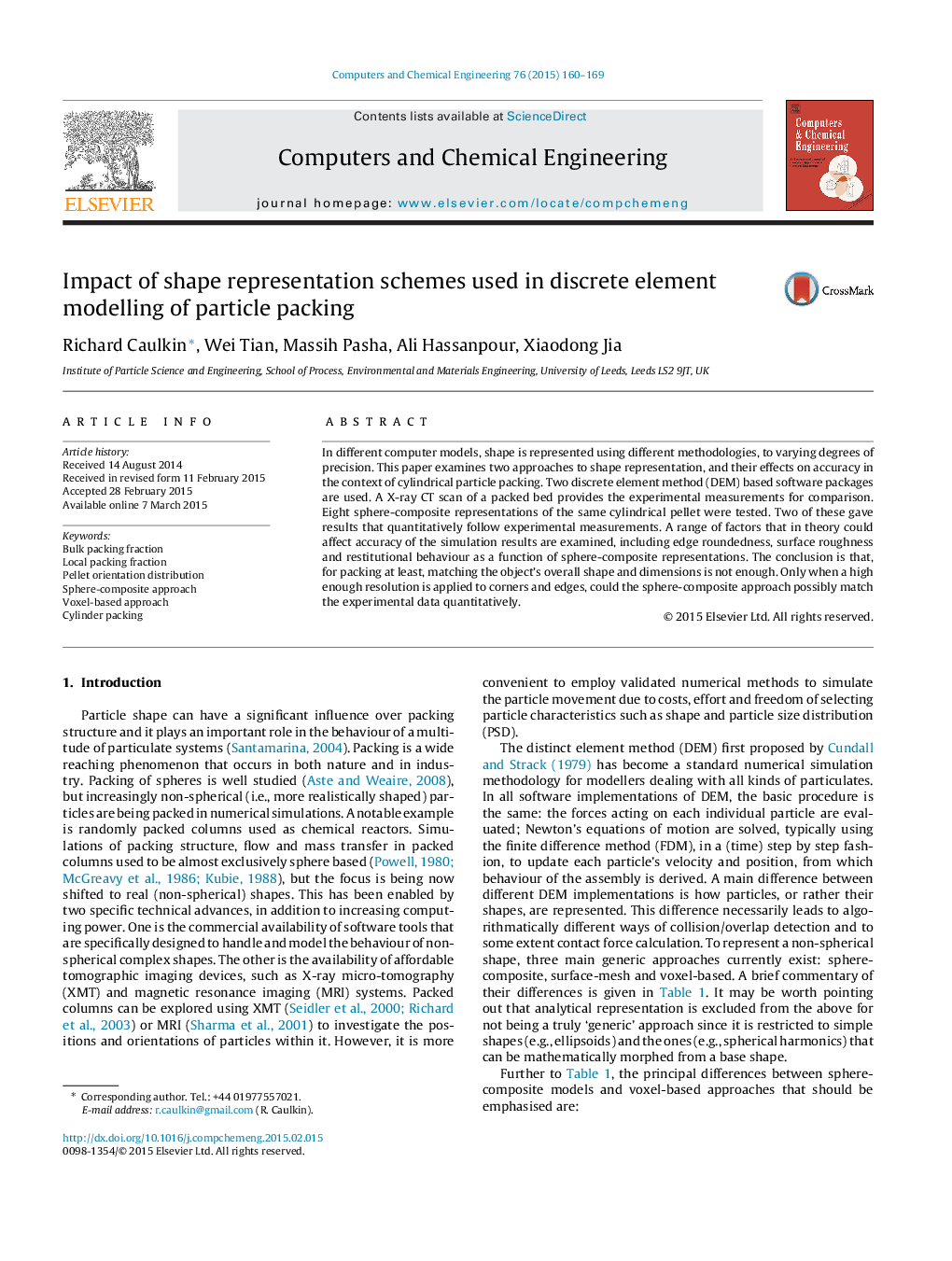| Article ID | Journal | Published Year | Pages | File Type |
|---|---|---|---|---|
| 6595428 | Computers & Chemical Engineering | 2015 | 10 Pages |
Abstract
In different computer models, shape is represented using different methodologies, to varying degrees of precision. This paper examines two approaches to shape representation, and their effects on accuracy in the context of cylindrical particle packing. Two discrete element method (DEM) based software packages are used. A X-ray CT scan of a packed bed provides the experimental measurements for comparison. Eight sphere-composite representations of the same cylindrical pellet were tested. Two of these gave results that quantitatively follow experimental measurements. A range of factors that in theory could affect accuracy of the simulation results are examined, including edge roundedness, surface roughness and restitutional behaviour as a function of sphere-composite representations. The conclusion is that, for packing at least, matching the object's overall shape and dimensions is not enough. Only when a high enough resolution is applied to corners and edges, could the sphere-composite approach possibly match the experimental data quantitatively.
Related Topics
Physical Sciences and Engineering
Chemical Engineering
Chemical Engineering (General)
Authors
Richard Caulkin, Wei Tian, Massih Pasha, Ali Hassanpour, Xiaodong Jia,
